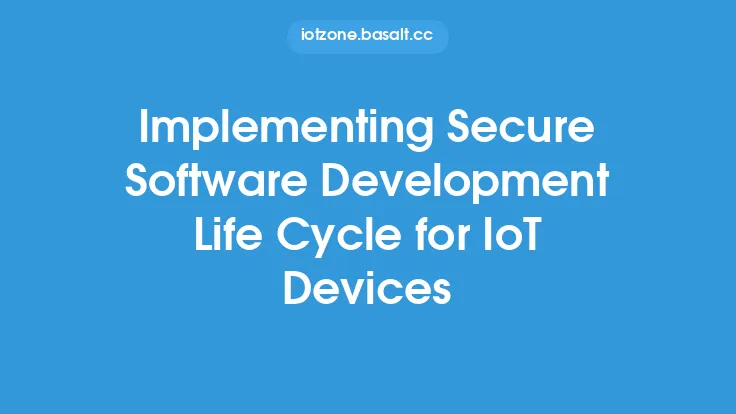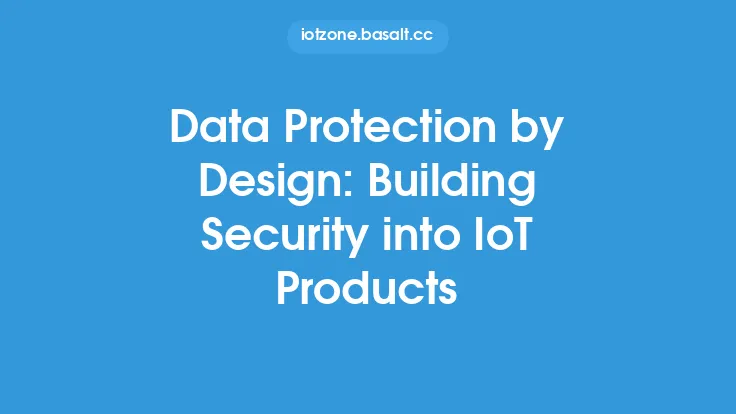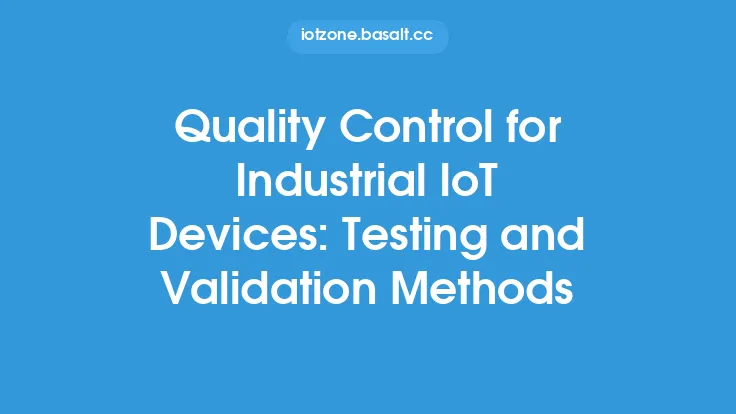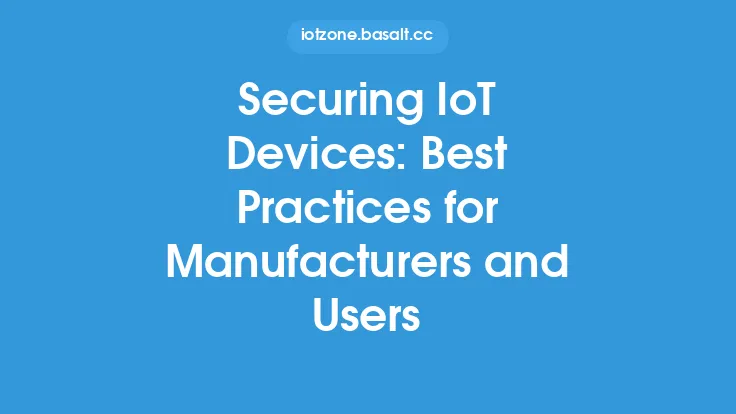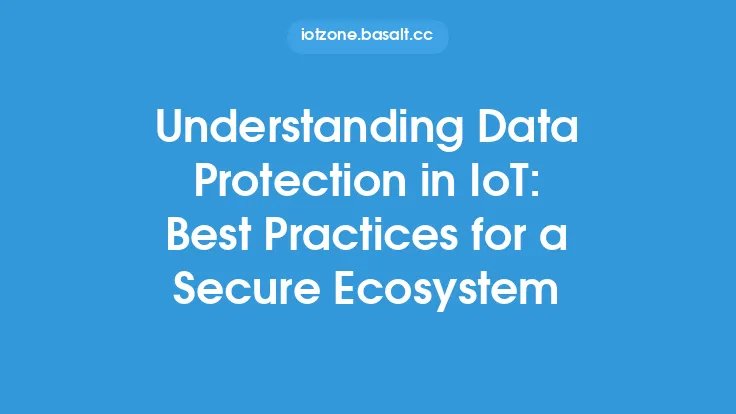The Internet of Things (IoT) has revolutionized the way we live and work, with an ever-increasing number of devices becoming connected to the internet. However, this increased connectivity has also introduced new security risks, making it essential to develop secure IoT devices from the ground up. Secure by design is a principle that emphasizes the importance of integrating security into every stage of the device development process, from design to deployment. In this article, we will explore the principles of secure by design and how they can be applied to develop secure IoT devices.
Introduction to Secure by Design
Secure by design is a security approach that involves designing and developing systems and devices with security in mind from the outset. This approach recognizes that security is not an afterthought, but rather an integral part of the development process. By incorporating security into every stage of development, manufacturers can ensure that their devices are secure, reliable, and resilient to cyber threats. The secure by design principle is based on several key concepts, including security requirements, threat modeling, and risk assessment.
Security Requirements
Security requirements are a critical component of the secure by design principle. These requirements outline the security features and functionalities that a device must have to ensure its security and integrity. Security requirements can include things like encryption, secure communication protocols, and access control mechanisms. To develop effective security requirements, manufacturers must first identify the potential security risks and threats associated with their device. This involves conducting a thorough risk assessment and threat modeling exercise to determine the types of attacks that the device may be vulnerable to.
Threat Modeling
Threat modeling is a systematic approach to identifying and mitigating potential security threats. It involves analyzing the device's architecture, identifying potential vulnerabilities, and developing strategies to mitigate or eliminate them. Threat modeling typically involves several steps, including identifying the device's assets, identifying potential threats, and developing a mitigation strategy. By conducting thorough threat modeling, manufacturers can identify potential security risks and develop effective countermeasures to prevent or mitigate them.
Risk Assessment
Risk assessment is another critical component of the secure by design principle. It involves evaluating the potential risks and consequences associated with a device's security vulnerabilities. Risk assessment typically involves several steps, including identifying potential vulnerabilities, evaluating the likelihood and potential impact of a security breach, and prioritizing vulnerabilities based on their risk level. By conducting thorough risk assessments, manufacturers can identify the most critical security vulnerabilities and develop effective strategies to mitigate or eliminate them.
Secure Communication Protocols
Secure communication protocols are essential for ensuring the security and integrity of IoT devices. These protocols ensure that data transmitted between devices and the cloud or other devices is encrypted and protected from unauthorized access. Common secure communication protocols used in IoT devices include Transport Layer Security (TLS), Secure Sockets Layer (SSL), and Datagram Transport Layer Security (DTLS). Manufacturers must ensure that their devices use secure communication protocols to prevent eavesdropping, tampering, and other types of cyber attacks.
Secure Data Storage
Secure data storage is another critical aspect of secure by design. IoT devices often store sensitive data, such as user credentials, encryption keys, and other confidential information. To ensure the security and integrity of this data, manufacturers must implement secure data storage mechanisms, such as encryption and access control. Encryption ensures that data is protected from unauthorized access, while access control mechanisms ensure that only authorized personnel can access the data.
Secure Boot Mechanisms
Secure boot mechanisms are essential for ensuring the security and integrity of IoT devices. These mechanisms ensure that the device boots up with a secure and trusted operating system and software. Secure boot mechanisms typically involve several steps, including verifying the integrity of the boot loader, verifying the integrity of the operating system, and verifying the integrity of the software. By implementing secure boot mechanisms, manufacturers can prevent malicious software and firmware from being installed on the device.
Secure Software Development Life Cycle
The secure software development life cycle (SDLC) is a critical aspect of secure by design. It involves integrating security into every stage of the software development process, from design to deployment. The secure SDLC typically involves several steps, including security requirements gathering, threat modeling, secure coding practices, and security testing. By following a secure SDLC, manufacturers can ensure that their software is secure, reliable, and resilient to cyber threats.
Benefits of Secure by Design
The secure by design principle offers several benefits, including improved security, reduced risk, and increased customer trust. By integrating security into every stage of the development process, manufacturers can ensure that their devices are secure, reliable, and resilient to cyber threats. This can help to reduce the risk of security breaches and cyber attacks, which can have serious consequences, including financial loss, reputational damage, and legal liability. Additionally, secure by design can help to increase customer trust, which is essential for building a loyal customer base and maintaining a competitive advantage in the market.
Challenges and Limitations
While the secure by design principle offers several benefits, it also presents several challenges and limitations. One of the main challenges is the need for specialized security expertise, which can be difficult to find and expensive to hire. Additionally, secure by design requires a significant investment of time and resources, which can be a challenge for manufacturers with limited budgets and tight deadlines. Furthermore, secure by design is not a one-time event, but rather an ongoing process that requires continuous monitoring and maintenance to ensure the security and integrity of the device.
Conclusion
In conclusion, secure by design is a critical principle for developing secure IoT devices. By integrating security into every stage of the development process, manufacturers can ensure that their devices are secure, reliable, and resilient to cyber threats. The secure by design principle involves several key concepts, including security requirements, threat modeling, risk assessment, secure communication protocols, secure data storage, secure boot mechanisms, and secure software development life cycle. While secure by design presents several challenges and limitations, it offers several benefits, including improved security, reduced risk, and increased customer trust. As the IoT continues to grow and evolve, the importance of secure by design will only continue to increase, making it essential for manufacturers to prioritize security in their device development processes.
